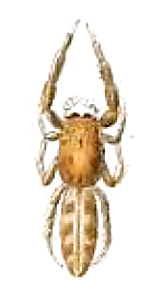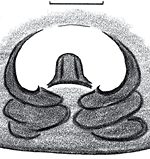 Fig.: D-9404
Modunda aeneiceps - ♀ - epigyne, ventral view. Scale bar: 0.1 mm- © LOGUNOV, D. V. (2000)
| | 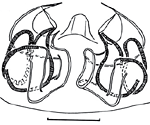 Fig.: D-9405
Modunda aeneiceps - ♀ - spermathecae, dorsal view. Scale bar: 0.1 mm- © LOGUNOV, D. V. (2000)
| | 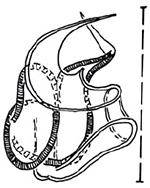 Fig.: D-9406
Modunda aeneiceps - ♀ - spermathecae, ventral view. Scale bar: 0.1 mm- © LOGUNOV, D. V. (2000)
| | 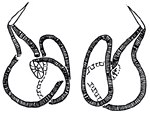 Fig.: D-9407
Modunda aeneiceps - ♀ - receptacles, dorsal and ventral views- © LOGUNOV, D. V. (2000)
| | 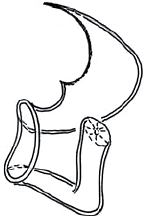 Fig.: D-9408
Modunda aeneiceps - ♀ - insemination duct, dorsal view- © LOGUNOV, D. V. (2000)
| | 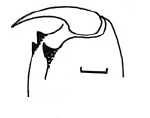 Fig.: D-9409
Modunda aeneiceps - ♀ - chelicera. Scale bar: 0.1 mm- © LOGUNOV, D. V. (2000)
| |
|
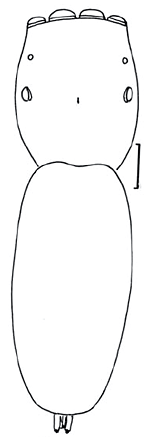 Fig.: D-9410
Modunda aeneiceps - ♀ - general appearance. Scale bar: 0.25 mm- © LOGUNOV, D. V. (2000)
| |  Fig.: D-9411
Modunda aeneiceps - ♀ - carapace, lateral view. Scale bar: 0.25 mm- © LOGUNOV, D. V. (2000)
| |  Fig.: D-37456
Bianor aeneiceps - ♀ - body. Scale: 1.0 mm- © PENG, X. J., XIE, L. P., XIAO, Q. X. & YIN, C. M. (1993)
| | 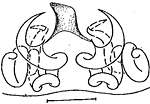 Fig.: D-37457
Bianor aeneiceps - ♀ - vulva dorsal. Scale: 0.1 mm- © PENG, X. J., XIE, L. P., XIAO, Q. X. & YIN, C. M. (1993)
| | 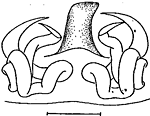 Fig.: D-37458
Bianor aeneiceps - ♀ - vulva ventral. Scale: 0.1 mm- © PENG, X. J., XIE, L. P., XIAO, Q. X. & YIN, C. M. (1993)
| | 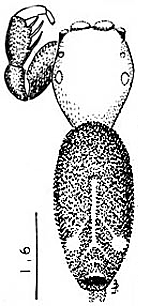 Fig.: D-2481
Modunda aeniceps - ♀ - Kandy! Colombo! - © PRÓSZYŃSKI, J. (1987)
| |
|
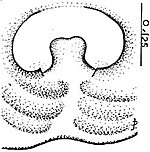 Fig.: D-2482
Modunda aeniceps - ♀ - Kandy! Colombo! - © PRÓSZYŃSKI, J. (1987)
| | 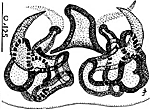 Fig.: D-2483
Modunda aeniceps - ♀ - Kandy! Colombo! - © PRÓSZYŃSKI, J. (1987)
| |
|
|
references |
KALDARI, R. (2010)
| Reassignment of the Indian species of Zygoballus to Bianor and Rhene (Araneae: Salticidae). , Simpsonville. 82.1: 1-4.
|
LOGUNOV, D. V. (2000)
| A redefinition of the genera Bianor PECKHAM & PECKHAM, 1885 and Harmochirus SIMON, 1885, with the establishment of a new genus Sibianor gen.n. (Aranei: Salticidae). Moscow, Moscow. 9 4: 221-286.
|
LOGUNOV, D. V. (2009)
| Further notes on the Harmochireae of Africa (Araneae, Salticidae, Pelleninae). 16: 265-290.
|
PENG, X. J. (2020)
| Fauna Sinica, Invertebrata 53, Arachnida: Araneae: Salticidae. Science Press, Beijing 612 pp.
|
PENG, X. J., XIE, L. P., XIAO, Q. X. & YIN, C. M. (1993)
| Salticids in China (Arachnida: Araneae). Hunan Normal University Press 270 pp..
|
PLATNICK, N. I. (1989)
| Advances in Spider Taxonomy 1981-1987. A supplement to Brignoli´s "A catalogue of the Araneae described between 1940 and 1981". Manchester University Press 673 pp.
|
PRÓSZYŃSKI, J. (1971)
| Catalogue of Salticidae (Aranei) specimens kept in major collections of the world. , Warszawa. 28 17: 367-519.
|
PRÓSZYŃSKI, J. (1987)
| Atlas rysunków diagnostycznych mniej znanych Salticidae 2. Zeszyty Naukowe Wyższej Szkoly Rolniczo-Pedagogicznej SiedlcachWSRP 1-172.
|
PRÓSZYŃSKI, J. (1987)
| Atlas rysunków diagnostycznych mniej znanych Salticidae 2. Zeszyty Naukowe Wyższej Szkoly Rolniczo-Pedagogicznej SiedlcachWSRP 1-172.
|
PRÓSZYŃSKI, J. (1990)
| Catalogue of Salticidae (Araneae): Synthesis of Quotations in the World Literature since 1940, with Basic Taxonomic Data since 1758. Siedlce 366 pp.
|
ROEWER, C. Fr. (1954)
| Katalog der Araneae von 1758 bis 1940 2. Band (Salticiformia, Cribellata). Inst.Roy.Sc.Nat.Bel. 975-1279.
|
SILIWAL, M. & MOLUR, S. (2007)
| Checklist of spiders (Arachnida: Araneae) of South Asia including the 2006 update of Indian spider checklist. 22 2: 2551-2597.
|
SIMON, E. (1901)
| Histoire naturelle des Araignees. Deuxieme edition. Paris (Roret) 2 3: 381-668.
|
SIMON, E. (1901)
| Descriptions d´Arachnides nouveaux de la famille des Attidae. Ann. Soc. Ent. Belg. 45: 141-161.
|
SONG, D. X., XIE, L. P., ZHU, M. S. & WU, K. Y. (1997)
| Notes on some jumping spiders (Araneae: Salticidae) of Hong Kong. 16 4: 149-152.
|
SONG, D. X., ZHU, M. S. & CHEN, J. (1999)
| The Spiders of China. Hebei Sci. Technol. Publ. House, Shijiazhuang 640 pp.
|
SONG, D. X., ZHU, M. S. & CHEN, J. (2001)
| The Fauna of Hebei, China: Araneae. Hebei Science Technol. Publ. House 510 pp.
|
YIN, C. M., PENG, X. J., YAN, H. M., BAO, Y. H., XU, X., TANG, G., ZHOU, Q. S. & LIU, P. (2012)
| Fauna Hunan: Araneae in Hunan, China. Hunan Science and Technology Press, Changsha 1590 pp.
|
 Fig.: D-23999
Modunda staintoni - ♂ - general appearance, dorsal view- © WESOŁOWSKA, W. & TOMASIEWICZ, B. (2008)
| | 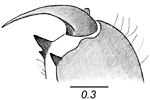 Fig.: D-24000
Modunda staintoni - ♂ - cheliceral dentition- © WESOŁOWSKA, W. & TOMASIEWICZ, B. (2008)
| | 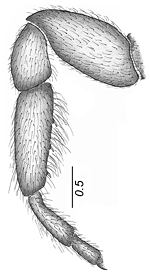 Fig.: D-24001
Modunda staintoni - ♂ - first leg- © WESOŁOWSKA, W. & TOMASIEWICZ, B. (2008)
| | 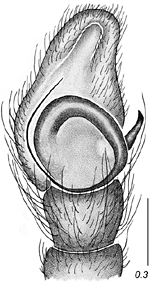 Fig.: D-24002
Modunda staintoni - ♂ - palpal organ, ventral view- © WESOŁOWSKA, W. & TOMASIEWICZ, B. (2008)
| | 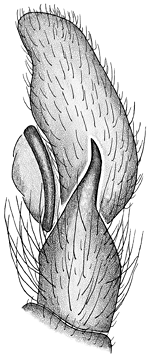 Fig.: D-24003
Modunda staintoni - ♂ - palpal organ, lateral view- © WESOŁOWSKA, W. & TOMASIEWICZ, B. (2008)
| | 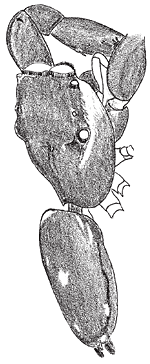 Fig.: D-962
Modunda staintoni - ♂ - General appearance- © PRÓSZYŃSKI, J. (2003)
| |
|
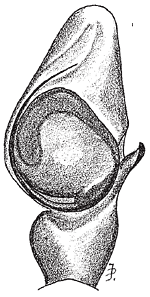 Fig.: D-963
Modunda staintoni - ♂ - palpal organ ventrally- © PRÓSZYŃSKI, J. (2003)
| | 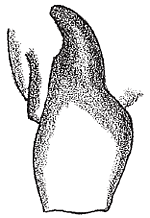 Fig.: D-964
Modunda staintoni - ♂ - palpal tibia laterally- © PRÓSZYŃSKI, J. (2003)
| | 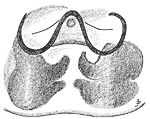 Fig.: D-965
Modunda staintoni - ♀ - epigynum- © PRÓSZYŃSKI, J. (2003)
| | 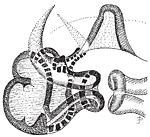 Fig.: D-966
Modunda staintoni - ♀ - Internal structure of epigynum- © PRÓSZYŃSKI, J. (2003)
| | 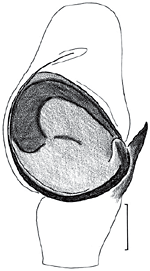 Fig.: D-9412
Modunda staintoni - ♂ - Jalalabad - palp, ventral view. Scale bar: 0.1 mm- © LOGUNOV, D. V. (2000)
| | 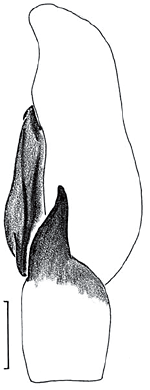 Fig.: D-9413
Modunda staintoni - ♂ - Jalalabad - palp, retrolateral view. Scale bar: 0.1 mm- © LOGUNOV, D. V. (2000)
| |
|
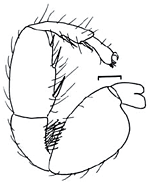 Fig.: D-9414
Modunda staintoni - ♂ - Jalalabad - leg I, lateral view. Scale bar: 0.25 mm- © LOGUNOV, D. V. (2000)
| | 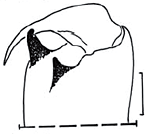 Fig.: D-9415
Modunda staintoni - ♂ - Jalalabad - chelicera. Scale bar: 0.1 mm- © LOGUNOV, D. V. (2000)
| |  Fig.: D-9416
Modunda staintoni - ♂ - Jalalabad - carapace, lateral view. Scale bar: 0.5 mm- © LOGUNOV, D. V. (2000)
| | 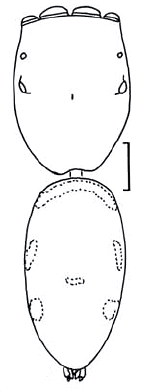 Fig.: D-9417
Modunda staintoni - ♂ - Jalalabad - general appearance. Scale bar: 0.5 mm- © LOGUNOV, D. V. (2000)
| | 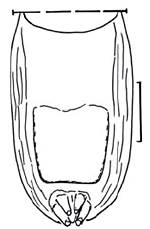 Fig.: D-9419
Modunda staintoni - ♂ - ventral scutum of abdomen. Scale bar: 0.5 mm- © LOGUNOV, D. V. (2000)
| | 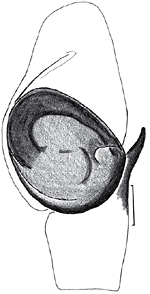 Fig.: D-9420
Modunda staintoni - ♂ - palp, ventral view. Scale bar: 0.1 mm- © LOGUNOV, D. V. (2000)
| |
|
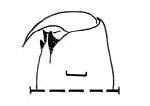 Fig.: D-9421
Modunda staintoni - ♀ - chelicera. Scale bar: 0.1 mm- © LOGUNOV, D. V. (2000)
| | 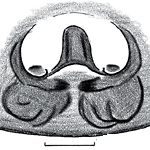 Fig.: D-9422
Modunda staintoni - ♀ - epigyne, ventral view. Scale bar: 0.1 mm- © LOGUNOV, D. V. (2000)
| | 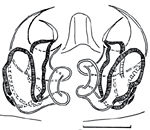 Fig.: D-9423
Modunda staintoni - ♀ - spermathecae, dorsal view. Scale bar: 0.1 mm- © LOGUNOV, D. V. (2000)
| | 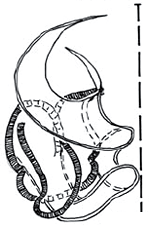 Fig.: D-9424
Modunda staintoni - ♀ - spermathecae, ventral view. Scale bar: 0.1 mm- © LOGUNOV, D. V. (2000)
| | 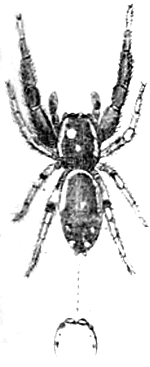 Fig.: D-15254
Salticus staintonii - ♂ - natural length of spider, caput and eyes- © PICKARD - CAMBRIDGE, O. (1872)
| | 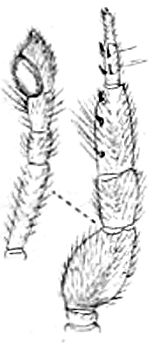 Fig.: D-15255
Salticus staintonii - ♂ - palpus, leg of first pair- © PICKARD - CAMBRIDGE, O. (1872)
| |
|
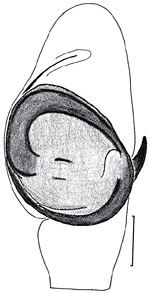 SYNONYM
Fig.: D-9418
Modunda phragmitis - ♂ - Suez - palp, ventral view. Scale bar: 0.1 mm- © LOGUNOV, D. V. (2000)
| | 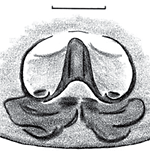 SYNONYM
Fig.: D-9425
Modunda phragmitis - ♀ - Suez - epigyne, ventral view. Scale bar: 0.1 mm- © LOGUNOV, D. V. (2000)
| | 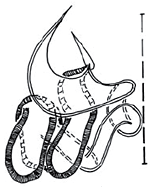 SYNONYM
Fig.: D-9426
Modunda phragmitis - ♀ - Suez - spermathecae, ventral view. Scale bar: 0.1 mm- © LOGUNOV, D. V. (2000)
| | 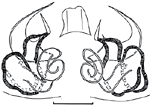 SYNONYM
Fig.: D-9427
Modunda phragmitis - ♀ - Suez - spermathecae, dorsal view. Scale bar: 0.1 mm- © LOGUNOV, D. V. (2000)
| | 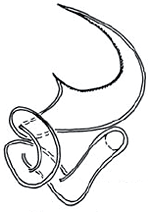 SYNONYM
Fig.: D-9428
Modunda phragmitis - ♀ - Suez - insemination duct, dorsal view- © LOGUNOV, D. V. (2000)
| | 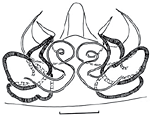 SYNONYM
Fig.: D-9429
Modunda phragmitis - ♀ - Suez - spermathecae, dorsal view. Scale bar: 0.1 mm- © LOGUNOV, D. V. (2000)
| |
|
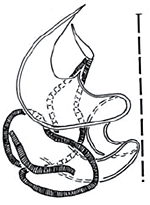 SYNONYM
Fig.: D-9430
Modunda phragmitis - ♀ - Suez - spermathecae, ventral view. Scale bar: 0.1 mm- © LOGUNOV, D. V. (2000)
| | 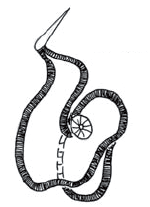 SYNONYM
Fig.: D-9431
Modunda phragmitis - ♀ - Suez - receptacles, dorsal view- © LOGUNOV, D. V. (2000)
| | 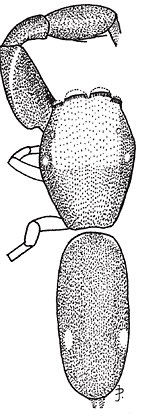 SYNONYM
Fig.: D-967
cf. Modunda phragmitis "1 ♂ Icius angustatus Luc.? B.1832" Coll. O.P.-CAMBRIDGE, Oxford, general appearance- © PRÓSZYŃSKI, J. (1987)
| | 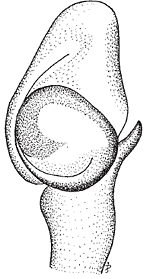 SYNONYM
Fig.: D-968
cf. Modunda phragmitis "1 ♂ Icius angustatus Luc.? B.1832" Coll. O.P.-CAMBRIDGE, Oxford, palpal organ ventrally- © PRÓSZYŃSKI, J. (1987)
| | 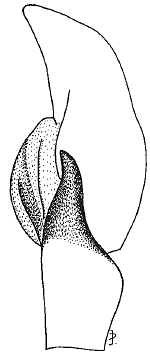 SYNONYM
Fig.: D-969
cf. Modunda phragmitis "1 ♂ Icius angustatus Luc.? B.1832" Coll. O.P.-CAMBRIDGE, Oxford, palpal organ laterally- © PRÓSZYŃSKI, J. (1987)
| | 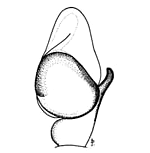 SYNONYM
Fig.: D-19577
Modunda phragmitis - ♂ - Fayum- © PRÓSZYŃSKI, J. (1987)
| |
|
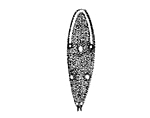 SYNONYM
Fig.: D-19578
Modunda phragmitis - ♂ - Fayum- © PRÓSZYŃSKI, J. (1987)
| | 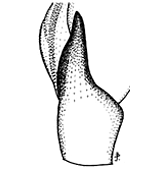 SYNONYM
Fig.: D-19579
Modunda phragmitis - ♂ - Fayum- © PRÓSZYŃSKI, J. (1987)
| | 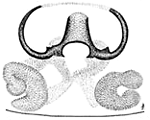 SYNONYM
Fig.: D-19580
Modunda phragmitis - ♀ - Fayum- © PRÓSZYŃSKI, J. (1987)
| | 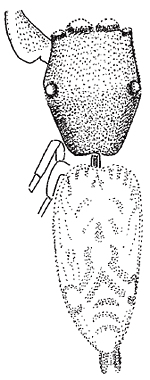 SYNONYM
Fig.: D-970
"12135 Modunda phragmitis ES Suez! 89" "TYPUS? M.E. GALIANO" - coll. SIMON, MNHN-Paris- © PRÓSZYŃSKI, J. (1987)
| | 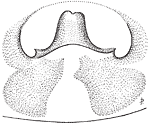 SYNONYM
Fig.: D-971
"12135 Modunda phragmitis ES Suez! 89" "TYPUS? M.E. GALIANO" - coll. SIMON, MNHN-Paris- © PRÓSZYŃSKI, J. (1987)
| | 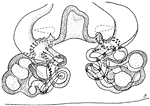 SYNONYM
Fig.: D-972
"12135 Modunda phragmitis ES Suez! 89" "TYPUS? M.E. GALIANO" - coll. SIMON, MNHN-Paris- © PRÓSZYŃSKI, J. (1987)
| |
|
|
|
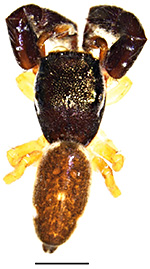
Fig.: F-23765
Modunda staintoni - ♂ - dorsal view. Scale bar: 1 mm - © PARMAR, S. & PRAJAPATI, D. A. (2023)
| | 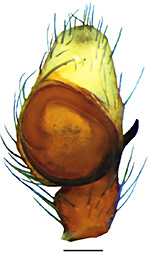
Fig.: F-23770
Modunda staintoni - ♂ - left pedipalp, ventral view. Scale bar: 0.1 mm - © PARMAR, S. & PRAJAPATI, D. A. (2023)
| | 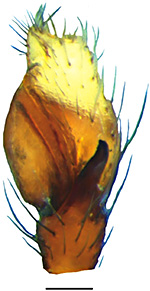
Fig.: F-23771
Modunda staintoni - ♂ - left pedipalp, retrolateral view. Scale bar: 0.1 mm - © PARMAR, S. & PRAJAPATI, D. A. (2023)
| | 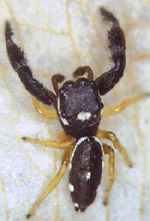
Fig.: F-2940
Modunda staintoni - ♂ - © WESOŁOWSKA, W. & VAN HARTEN, A. (2007)
| | 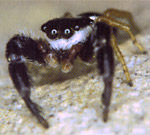
Fig.: F-2941
Modunda staintoni - ♂ - © WESOŁOWSKA, W. & VAN HARTEN, A. (2007)
| |
references |
CALEB, J. T. D. (2019)
| An annotated checklist of jumping spiders (Araneae: Salticidae) of India. AkiNik Publications, New Delhi 75 pp.
|
EL-HENNAWY, H. K. (1990)
| Annotated checklist of Egyptian spider species. , Cairo. 1: 1-49.
|
KALDARI, R. (2010)
| Reassignment of the Indian species of Zygoballus to Bianor and Rhene (Araneae: Salticidae). , Simpsonville. 82.1: 1-4.
|
LOGUNOV, D. V. (2000)
| A redefinition of the genera Bianor PECKHAM & PECKHAM, 1885 and Harmochirus SIMON, 1885, with the establishment of a new genus Sibianor gen.n. (Aranei: Salticidae). Moscow, Moscow. 9 4: 221-286.
|
LOGUNOV, D. V. (2009)
| Further notes on the Harmochireae of Africa (Araneae, Salticidae, Pelleninae). 16: 265-290.
|
LOGUNOV, D. V. (2019)
| Taxonomic notes on the Harmochirina SIMON, 1903 from South and South-East Asia (Aranei: Salticidae). , Moscow. 28 1: 99-112.
|
PARMAR, S. & PRAJAPATI, D. A. (2023)
| New distribution records of two jumping spiders (Araneae: Salticidae) from Gujarat, India. Journal of Threatened Taxa 15 5: 23276-23278.
|
PICKARD - CAMBRIDGE, O. (1872)
| General list of the spiders of Palestine and Syria, with descriptions of numerous new species and characters of two new genera. 1870: 212-354.
|
PLATNICK, N. I. (1989)
| Advances in Spider Taxonomy 1981-1987. A supplement to Brignoli´s "A catalogue of the Araneae described between 1940 and 1981". Manchester University Press 673 pp.
|
PLATNICK, N. I. (1993)
| Advances in Spider Taxonomy 1988-1991. With synonymies and transfers 1940-1980. Entomol. Soc. & Am. Mus. nat. Hist. 846 pp.
|
PRÓSZYŃSKI, J. (1971)
| Catalogue of Salticidae (Aranei) specimens kept in major collections of the world. , Warszawa. 28 17: 367-519.
|
PRÓSZYŃSKI, J. (1987)
| Atlas rysunków diagnostycznych mniej znanych Salticidae 2. Zeszyty Naukowe Wyższej Szkoly Rolniczo-Pedagogicznej SiedlcachWSRP 1-172.
|
PRÓSZYŃSKI, J. (1990)
| Catalogue of Salticidae (Araneae): Synthesis of Quotations in the World Literature since 1940, with Basic Taxonomic Data since 1758. Siedlce 366 pp.
|
PRÓSZYŃSKI, J. (2003)
| Salticidae (Araneae) of the Levant. , Warszawa. 53 1: 1-180.
|
PRÓSZYŃSKI, J. (2017)
| Pragmatic classification of the World's Salticidae (Araneae). ECOLOGICA MONTENEGRINA 12: 1-134.
|
REIMOSER, E. (1919)
| Katalog der echten Spinnen (Araneae) des paläarktischen Gebietes. Abh. Zool.- Bot. Ges. Wien 10 2: 1-280.
|
ROEWER, C. Fr. (1954)
| Katalog der Araneae von 1758 bis 1940 2. Band (Salticiformia, Cribellata). Inst.Roy.Sc.Nat.Bel. 975-1279.
|
SILIWAL, M., MOLUR, S. & BISWAS, B. K. (2005)
| Indian spiders (Arachnida: Araneae): updated checklist 2005. 20 10: 1999-2049.
|
SIMON, E. (1876)
| Les Arachnides de France. Tome troisieme contenant les familles des Attidea, Oxyopidae et Lycosidae. Librairie Encyclopédique de Roret, Paris 1-370.
|
SIMON, E. (1901)
| Descriptions d´Arachnides nouveaux de la famille des Attidae. Ann. Soc. Ent. Belg. 45: 141-161.
|
WESOŁOWSKA, W. & HADDAD, C. R. (2009)
| Jumping spiders (Araneae: Salticidae) of the Ndumo Game Reserve, Maputaland, South Africa. African Invertebrates 50 1: 13-103.
|
WESOŁOWSKA, W. & TOMASIEWICZ, B. (2008)
| New species and records of Ethiopian jumping spiders (Araneae, Salticidae). J. Afrotrop. Zool. 4: 3-59.
|
WESOŁOWSKA, W. & VAN HARTEN, A. (2007)
| Additions to the knowledge of jumping spiders (Araneae: Salticidae) of Yemen. Fauna of Arabia 23: 189-269.
|














